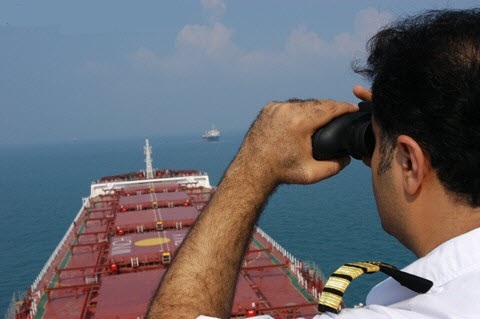The term “look out” refers to the task of maintaining a continuous visual and auditory watch for potential hazards while on watchkeeping duty onboard commercial ships. The person assigned to the look out task is responsible for monitoring the surrounding area of the ship for any potential hazards, such as other vessels, navigational hazards, or changes in weather conditions.
The look out task is a critical component of watchkeeping on commercial ships, as it helps to ensure the safe and efficient passage of the vessel. The person assigned to the look out task must be vigilant and focused, and must report any potential hazards to the officer on watch in a timely manner. The look out task involves both visual and auditory monitoring. The person assigned to the task must maintain a constant visual scan of the surrounding area of the ship, using binoculars if necessary. They must also listen for any sounds that may indicate potential hazards, such as the sound of a nearby vessel or navigational aid. The person assigned to the look out task must also be aware of their surroundings and any potential distractions that may impact their ability to perform the task effectively. They must remain alert and focused, and avoid any activities that may interfere with their ability to maintain a proper look out.

The International Maritime Organization (IMO) has established regulations regarding the look out a task for navigation watchkeeping onboard commercial ships. These regulations are outlined in the International Convention for the Safety of Life at Sea (SOLAS) and the International Convention on Standards of Training, Certification and Watchkeeping for Seafarers (STCW).
According to SOLAS, the look out task must be performed by a competent person who is capable of maintaining a continuous visual and auditory watch. The person assigned to the task must be able to identify potential hazards and report them in a timely manner. SOLAS also requires that the person assigned to the look out task must not be assigned any other duties that may interfere with their ability to maintain a proper look out.
STCW also outlines requirements for the look out task. The convention requires that the person assigned to the task must be competent in performing the task effectively and must have received training in the proper procedures for maintaining a proper look out. STCW also requires that the person assigned to the look out task must be familiar with the ship’s equipment and must be able to communicate effectively with other members of the crew.
In addition to these regulations, both SOLAS and STCW require that the ship’s master must ensure that the look out task is being performed effectively and that the person assigned to the task is properly trained and competent. The master is also responsible for ensuring that the ship’s equipment, including binoculars and other aids to navigation, are in good working order and readily available for the person assigned to the look out task.
The regulations established by SOLAS and STCW emphasize the critical importance of the look out task for navigation watchkeeping onboard commercial ships. The regulations ensure that the person assigned to the task is properly trained and competent, and that the task is performed effectively to ensure the safe and efficient passage of the vessel.
Overall, the look out task is a critical component of watchkeeping on commercial ships, and it is essential to have well-trained personnel who are proficient in performing the task effectively. The look out task helps to ensure the safe and efficient passage of the ship, and is a key element of maritime safety.
Prepared by MaritimEducation team

